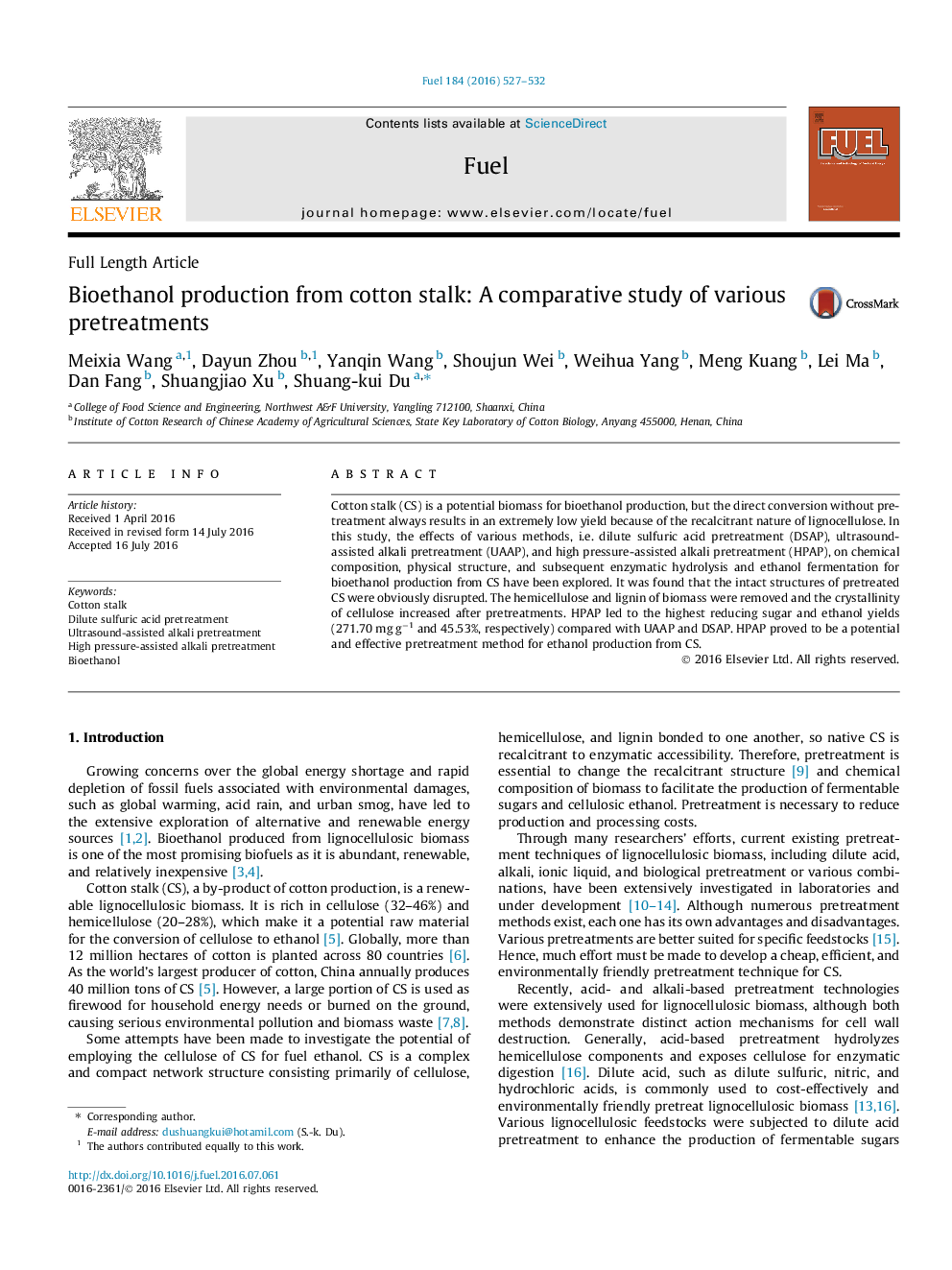| Article ID | Journal | Published Year | Pages | File Type |
|---|---|---|---|---|
| 6633068 | Fuel | 2016 | 6 Pages |
Abstract
Cotton stalk (CS) is a potential biomass for bioethanol production, but the direct conversion without pretreatment always results in an extremely low yield because of the recalcitrant nature of lignocellulose. In this study, the effects of various methods, i.e. dilute sulfuric acid pretreatment (DSAP), ultrasound-assisted alkali pretreatment (UAAP), and high pressure-assisted alkali pretreatment (HPAP), on chemical composition, physical structure, and subsequent enzymatic hydrolysis and ethanol fermentation for bioethanol production from CS have been explored. It was found that the intact structures of pretreated CS were obviously disrupted. The hemicellulose and lignin of biomass were removed and the crystallinity of cellulose increased after pretreatments. HPAP led to the highest reducing sugar and ethanol yields (271.70 mg gâ1 and 45.53%, respectively) compared with UAAP and DSAP. HPAP proved to be a potential and effective pretreatment method for ethanol production from CS.
Related Topics
Physical Sciences and Engineering
Chemical Engineering
Chemical Engineering (General)
Authors
Meixia Wang, Dayun Zhou, Yanqin Wang, Shoujun Wei, Weihua Yang, Meng Kuang, Lei Ma, Dan Fang, Shuangjiao Xu, Shuang-kui Du,
